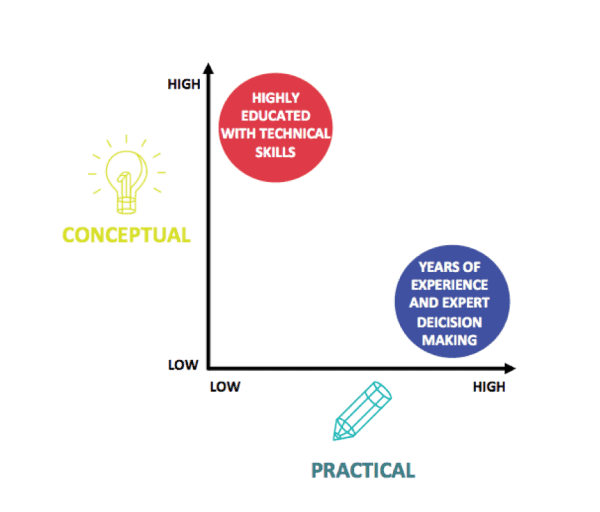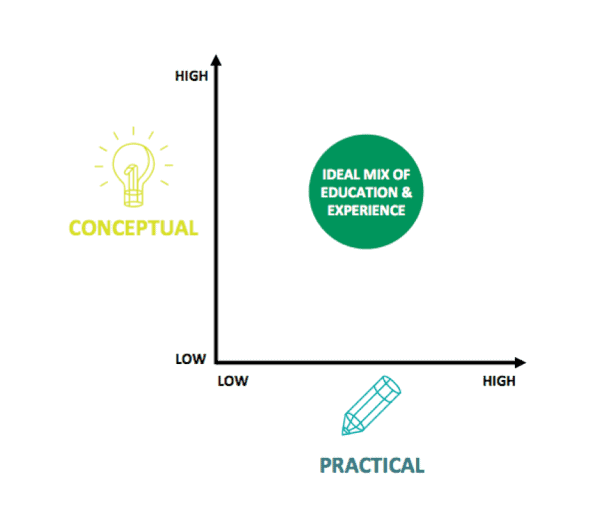In my experience working across multiple industries and organisations, too many quantitative research reports and dashboards sit on desks unread or unused. At the same time, key decisions are being made by senior management based on little evidence or insight even though the information is often sitting right in front of them.
Why is this? One of the most common reasons is that the ‘analysis’ has not been transformed into ‘insight’: bringing the most relevant information to the fore and aligning it with the business goals is key but is rarely done well in many organisations today.
On the positive side, everyone understands the need for data, and they tend to collect a lot of it. On the negative side, the skills required to convert data to analysis and then insight are not well understood.
The result of this is two-fold:
- Organisations gather never-ending amounts of data but have very little ability to make business decisions from it. Decisions continue to be based on gut feel or preference rather than on sound evidence. With no way to measure or track the success of these decisions, the cycle continues unbroken.
- The perception is that research is not a good investment in either time or money, so research is an easy target when it comes to budget constraints.
Understanding the importance of the research
Organisations who are making the best use of their investment in quantitative research and analytics have come to understand two key areas, which I explore below:
- The difference between data, analysis and insight;
- The importance of investing not just in systems and tools to capture data, but also in the right people and skillset to make the biggest difference to an organisation.
Having this understanding enables organisations to make the right decisions with more confidence while being clear on how they fit with company objectives, and how they will measure success and mitigate risks.
Difference between data, analysis, and insight
Data is simply ‘information’ – facts or statistics about a topic. This could come from surveys, customer feedback, sales or operational records, social media, observations… the list goes on. This data can be structured or unstructured, and decisions on what to gather, keep and use often involve many parts of the organisation. IT is typically responsible for the systems and processes for collecting and storing this data but not experienced in the analysis and interpretation.
Analysis is the processes of cleaning, manipulating and exploring the data and relationships existing within it. This can include sorting, clustering and segmenting and applying statistical techniques to test hypotheses and look for patterns and relationships, and developing predictive models.
Analysis forms the foundation of insight, but it does not equal insight. Insight, by definition, is the ability to discern the true nature of the situation. It is about understanding what information is the most pertinent to the project/company objectives, and how to present it so the target audience can apply it to business decisions.
While much of the process of data collection and analysis can be automated, insight cannot. It relies heavily on practical experience and commercial understanding.
This may all sound logical but not all managers and management teams understand that specific skills are required to tackle all three areas.
Importance of investing in the right people
- During my years as a trainer in statistical software and data analytics, I commonly encountered staff in analytical roles whose skills were at the extreme ends of the spectrum:
- Employees with exceptional technical skills and education but little business experience or acumen;
very knowledgeable and even senior employees who are recognised for their experience and assumed to have the requisite analytical skills.

It’s easy to underestimate the technical skills required to analyse data, and I am definitely not convinced that “anyone can be an analyst”. Anyone can call themselves an analyst but it requires a particular mindset, mentoring, lots of practice and of course training in sampling methodology, data manipulation, statistical significance testing and modelling.
An understanding of the methodology behind any automated collection or analysis is crucial for producing accurate and effective results.
And technical skills alone are not enough: once you have applied statistical techniques to a data set, you need the business skills and experience to pull out the most significant information for the business context.
How to find the right formula
So how do we find people who have the magic formula of technical skills PLUS business experience so they can take data and make a real difference to an organisation?
It’s not easy! The range of job titles and descriptions requires rigourous analysis just to understand areas of competence. My preference is to see the analyst’s mind in action to gain a better understanding of their ability.
I am not a fan of dropping an exercise on a candidate in an interview for on-the-spot analysis and insight. I personally never did really well at this in interviews. It is not reflective of the real world, nor does it show understanding of the way a true analyst thinks.
What works better is to create an exercise containing background, objectives and a set of data, and ask candidates to review it and write a brief presentation for a later date. They then present this to the team or interview panel. Having time to actually analyse, research and think through some insights gives people the best opportunity to demonstrate their technical skills, communication skills and business acumen. A good analyst will shine at this but a bad one will crumble and gaps in their skills will be very apparent.
The perfect package is rare. Finding people with the full set of skills and experience is rare.
A highly technical analyst is very good at immersing themselves into the data and thoroughly reviewing it from every angle; however, they often find it very difficult to surface and see the bigger picture or suggest practical application for the business.
On the other hand, a businessperson with exceptional acumen and experience will focus on the broader picture, but may find the finer detail of analysis difficult to process. Also, they often lack the full set of technical skills to get the most out of the data.
To overcome this and gain the biggest advantage, you need to spot potential and develop your staff so they sit less at one end of the spectrum and have more balanced skills. It is also important that you have the right mix of staff to be able capitalise on their strengths and cover all bases.

All this requires time, money and resources, but I have seen how the effective use of data, analysis and insight by the right people can transform a business.
Create the return on investment
I believe that smart organisations are the ones willing to spend money investing in data AND in the right people to help them use it effectively, creating relevant and actionable insights.
So let’s reduce the number of reports gathering literal or digital dust and instead focus on hiring the right people to maximise the value of your research and have the biggest impact on your business.